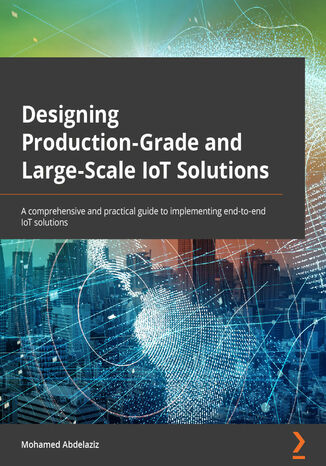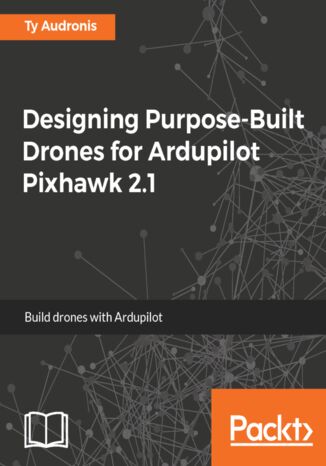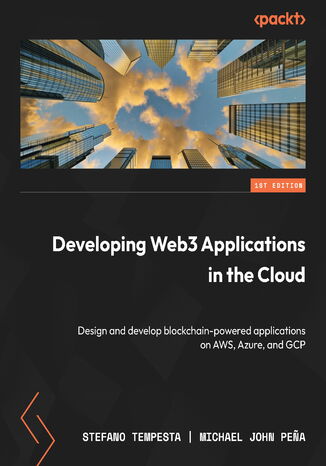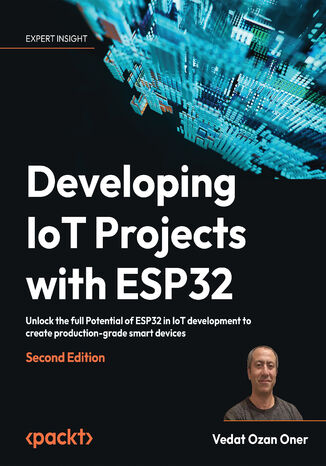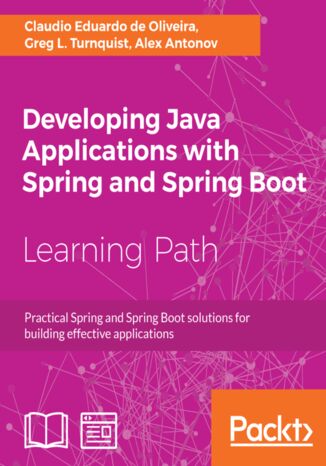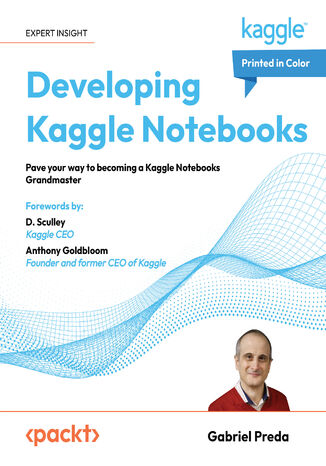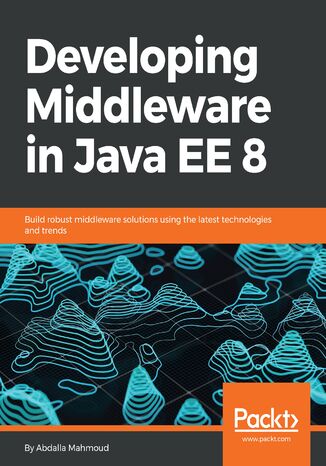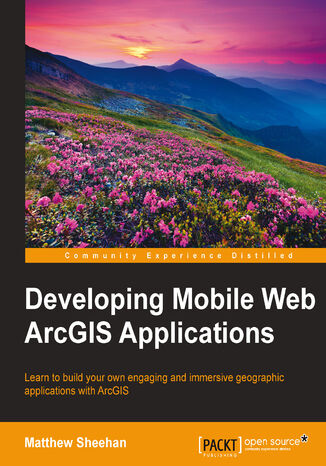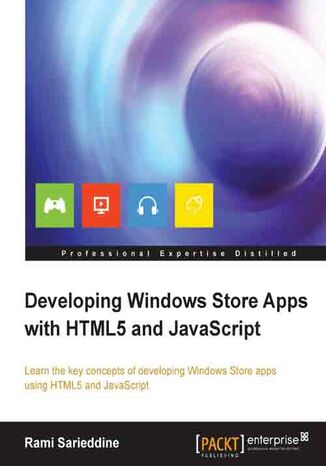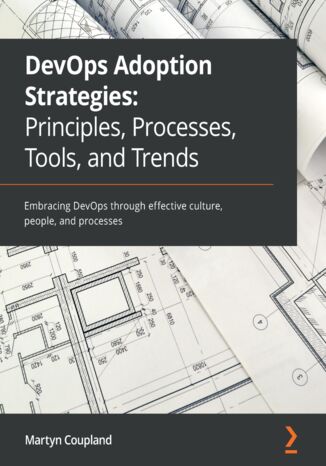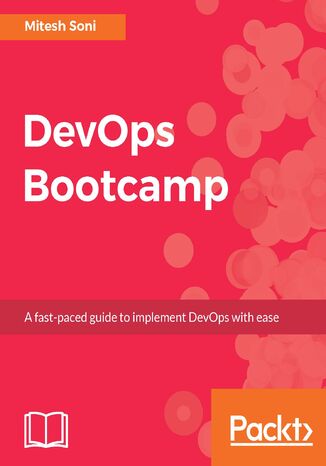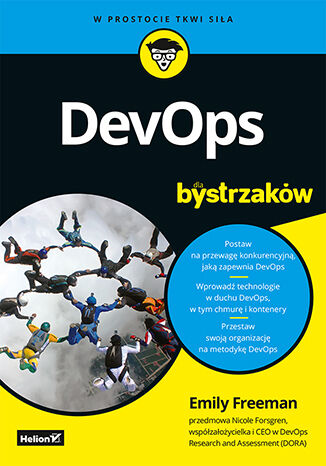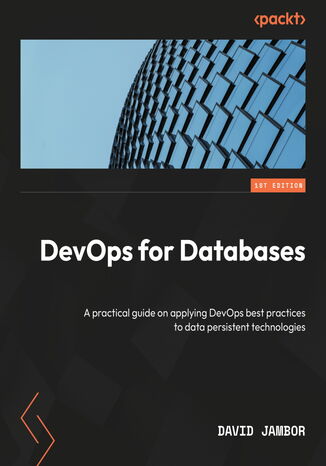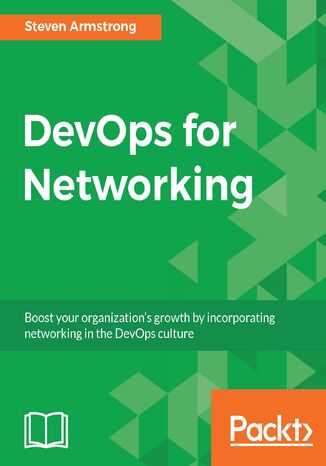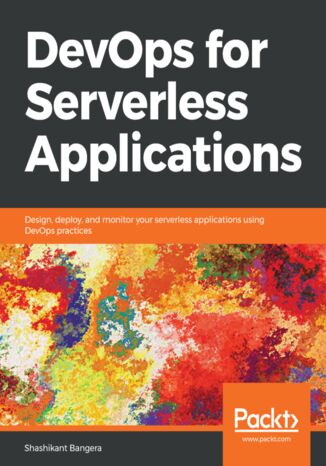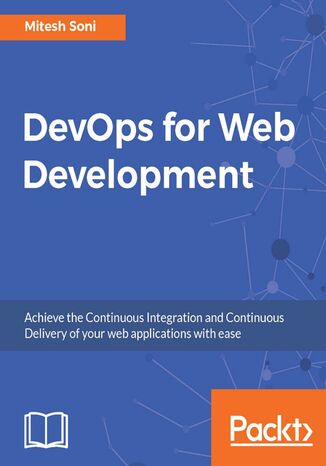Категорії
Електронні книги
-
Бізнес та економіка
- Біткойн
- Ділова жінка
- Коучинг
- Контроль
- Електронний бізнес
- Економіка
- Фінанси
- Фондова біржа та інвестиції
- Особисті компетенції
- Комп'ютер в офісі
- Комунікація та переговори
- Малий бізнес
- Маркетинг
- Мотивація
- Мультимедійне навчання
- Нерухомість
- Переконання та НЛП
- Податки
- Соціальна політика
- Порадники
- Презентації
- Лідерство
- Зв'язки з громадськістю
- Звіти, аналізи
- Секрет
- Соціальні засоби комунікації
- Продаж
- Стартап
- Ваша кар'єра
- Управління
- Управління проектами
- Людські ресурси (HR)
-
Для дітей
-
Для молоді
-
Освіта
-
Енциклопедії, словники
-
Електронна преса
- Architektura i wnętrza
- Безпека життєдіяльності
- Biznes i Ekonomia
- Будинок та сад
- Електронний бізнес
- Ekonomia i finanse
- Езотерика
- Фінанси
- Особисті фінанси
- Бізнес
- Фотографія
- Інформатика
- Відділ кадрів та оплата праці
- Для жінок
- Комп'ютери, Excel
- Бухгалтерія
- Культура та література
- Наукові та академічні
- Охорона навколишнього середовища
- Впливові
- Освіта
- Податки
- Подорожі
- Психологія
- Релігія
- Сільське господарство
- Ринок книг і преси
- Транспорт та спедиція
- Здоров'я та краса
-
Історія
-
Інформатика
- Офісні застосунки
- Бази даних
- Біоінформатика
- Бізнес ІТ
- CAD/CAM
- Digital Lifestyle
- DTP
- Електроніка
- Цифрова фотографія
- Комп'ютерна графіка
- Ігри
- Хакування
- Hardware
- IT w ekonomii
- Наукові пакети
- Шкільні підручники
- Основи комп'ютера
- Програмування
- Мобільне програмування
- Інтернет-сервери
- Комп'ютерні мережі
- Стартап
- Операційні системи
- Штучний інтелект
- Технологія для дітей
- Вебмайстерність
-
Інше
-
Іноземні мови
-
Культура та мистецтво
-
Шкільні читанки
-
Література
- Антології
- Балада
- Біографії та автобіографії
- Для дорослих
- Драми
- Журнали, щоденники, листи
- Епос, епопея
- Нарис
- Наукова фантастика та фантастика
- Фельєтони
- Художня література
- Гумор, сатира
- Інше
- Класичний
- Кримінальний роман
- Нехудожня література
- Художня література
- Mity i legendy
- Лауреати Нобелівської премії
- Новели
- Побутовий роман
- Okultyzm i magia
- Оповідання
- Спогади
- Подорожі
- Оповідна поезія
- Поезія
- Політика
- Науково-популярна
- Роман
- Історичний роман
- Проза
- Пригодницька
- Журналістика
- Роман-репортаж
- Romans i literatura obyczajowa
- Сенсація
- Трилер, жах
- Інтерв'ю та спогади
-
Природничі науки
-
Соціальні науки
-
Шкільні підручники
-
Науково-популярна та академічна
- Археологія
- Bibliotekoznawstwo
- Кінознавство / Теорія кіно
- Філологія
- Польська філологія
- Філософія
- Finanse i bankowość
- Географія
- Економіка
- Торгівля. Світова економіка
- Історія та археологія
- Історія мистецтва і архітектури
- Культурологія
- Мовознавство
- літературні студії
- Логістика
- Математика
- Ліки
- Гуманітарні науки
- Педагогіка
- Навчальні засоби
- Науково-популярна
- Інше
- Психологія
- Соціологія
- Театральні студії
- Богослов’я
- Економічні теорії та науки
- Transport i spedycja
- Фізичне виховання
- Zarządzanie i marketing
-
Порадники
-
Ігрові посібники
-
Професійні та спеціальні порадники
-
Юридична
- Безпека життєдіяльності
- Історія
- Дорожній кодекс. Водійські права
- Юридичні науки
- Охорона здоров'я
- Загальне, компендіум
- Академічні підручники
- Інше
- Закон про будівництво і житло
- Цивільне право
- Фінансове право
- Господарське право
- Господарське та комерційне право
- Кримінальний закон
- Кримінальне право. Кримінальні злочини. Кримінологія
- Міжнародне право
- Міжнародне та іноземне право
- Закон про охорону здоров'я
- Закон про освіту
- Податкове право
- Трудове право та законодавство про соціальне забезпечення
- Громадське, конституційне та адміністративне право
- Кодекс про шлюб і сім'ю
- Аграрне право
- Соціальне право, трудове право
- Законодавство Євросоюзу
- Промисловість
- Сільське господарство та захист навколишнього середовища
- Словники та енциклопедії
- Державні закупівлі
- Управління
-
Путівники та подорожі
- Африка
- Альбоми
- Південна Америка
- Центральна та Північна Америка
- Австралія, Нова Зеландія, Океанія
- Австрія
- Азії
- Балкани
- Близький Схід
- Болгарія
- Китай
- Хорватія
- Чеська Республіка
- Данія
- Єгипет
- Естонія
- Європа
- Франція
- Гори
- Греція
- Іспанія
- Нідерланди
- Ісландія
- Литва
- Латвія
- Mapy, Plany miast, Atlasy
- Мініпутівники
- Німеччина
- Норвегія
- Активні подорожі
- Польща
- Португалія
- Інше
- Przewodniki po hotelach i restauracjach
- Росія
- Румунія
- Словаччина
- Словенія
- Швейцарія
- Швеція
- Світ
- Туреччина
- Україна
- Угорщина
- Велика Британія
- Італія
-
Психологія
- Філософія життя
- Kompetencje psychospołeczne
- Міжособистісне спілкування
- Mindfulness
- Загальне
- Переконання та НЛП
- Академічна психологія
- Психологія душі та розуму
- Психологія праці
- Relacje i związki
- Батьківство та дитяча психологія
- Вирішення проблем
- Інтелектуальний розвиток
- Секрет
- Сексуальність
- Спокушання
- Зовнішній вигляд та імідж
- Філософія життя
-
Релігія
-
Спорт, фітнес, дієти
-
Техніка і механіка
Аудіокниги
-
Бізнес та економіка
- Біткойн
- Ділова жінка
- Коучинг
- Контроль
- Електронний бізнес
- Економіка
- Фінанси
- Фондова біржа та інвестиції
- Особисті компетенції
- Комунікація та переговори
- Малий бізнес
- Маркетинг
- Мотивація
- Нерухомість
- Переконання та НЛП
- Податки
- Соціальна політика
- Порадники
- Презентації
- Лідерство
- Зв'язки з громадськістю
- Секрет
- Соціальні засоби комунікації
- Продаж
- Стартап
- Ваша кар'єра
- Управління
- Управління проектами
- Людські ресурси (HR)
-
Для дітей
-
Для молоді
-
Освіта
-
Енциклопедії, словники
-
Електронна преса
-
Історія
-
Інформатика
-
Інше
-
Іноземні мови
-
Культура та мистецтво
-
Шкільні читанки
-
Література
- Антології
- Балада
- Біографії та автобіографії
- Для дорослих
- Драми
- Журнали, щоденники, листи
- Епос, епопея
- Нарис
- Наукова фантастика та фантастика
- Фельєтони
- Художня література
- Гумор, сатира
- Інше
- Класичний
- Кримінальний роман
- Нехудожня література
- Художня література
- Mity i legendy
- Лауреати Нобелівської премії
- Новели
- Побутовий роман
- Okultyzm i magia
- Оповідання
- Спогади
- Подорожі
- Поезія
- Політика
- Науково-популярна
- Роман
- Історичний роман
- Проза
- Пригодницька
- Журналістика
- Роман-репортаж
- Romans i literatura obyczajowa
- Сенсація
- Трилер, жах
- Інтерв'ю та спогади
-
Природничі науки
-
Соціальні науки
-
Науково-популярна та академічна
-
Порадники
-
Професійні та спеціальні порадники
-
Юридична
-
Путівники та подорожі
-
Психологія
- Філософія життя
- Міжособистісне спілкування
- Mindfulness
- Загальне
- Переконання та НЛП
- Академічна психологія
- Психологія душі та розуму
- Психологія праці
- Relacje i związki
- Батьківство та дитяча психологія
- Вирішення проблем
- Інтелектуальний розвиток
- Секрет
- Сексуальність
- Спокушання
- Зовнішній вигляд та імідж
- Філософія життя
-
Релігія
-
Спорт, фітнес, дієти
-
Техніка і механіка
Відеокурси
-
Бази даних
-
Big Data
-
Biznes, ekonomia i marketing
-
Кібербезпека
-
Data Science
-
DevOps
-
Для дітей
-
Електроніка
-
Графіка / Відео / CAX
-
Ігри
-
Microsoft Office
-
Інструменти розробки
-
Програмування
-
Особистісний розвиток
-
Комп'ютерні мережі
-
Операційні системи
-
Тестування програмного забезпечення
-
Мобільні пристрої
-
UX/UI
-
Веброзробка, Web development
-
Управління
Подкасти
- Електронні книги
- Інформатика
- Програмування
Програмування
Nasza biblioteka online zawiera szereg publikacji, dzięki którym programowanie nie będzie mieć przed Tobą żadnych tajemnic. Zawarte tu książki przybliżą Ci takie języki jak HTML, JavaScript, Python czy CSS. Dowiesz się dzięki nim także tego, jak tworzyć efektywne algorytmy, projektować aplikacje mobilne, czy dbać o poprawną architekturę informacji w serwisach internetowych.
With the rising demand for and recent enhancements in IoT, a developer with sound knowledge of IoT is the need of the hour. This book will help you design, build, and operate large-scale E2E IoT solutions to transform your business and products, increase revenue, and reduce operational costs.Starting with an overview of how IoT technologies can help you solve your business problems, this book will be a useful guide to helping you implement end-to-end IoT solution architecture. You'll learn to select IoT devices; real-time operating systems; IoT Edge covering Edge location, software, and hardware; and the best IoT connectivity for your IoT solution. As you progress, you'll work with IoT device management, IoT data analytics, IoT platforms, and put these components to work as part of your IoT solution. You'll also be able to build IoT backend cloud from scratch by leveraging the modern app architecture paradigms and cloud-native technologies such as containers and microservices. Finally, you'll discover best practices for different operational excellence pillars, including high availability, resiliency, reliability, security, cost optimization, and high performance, which should be applied for large-scale production-grade IoT solutions.By the end of this IoT book, you'll be confident in designing, building, and operating IoT solutions.
The Odoo website builder is an operational tool in the Odoo platform that allows you to design, develop, and manage a website. This book introduces and explains all the features of the Odoo website builder that will help you to be more productive while creating websites.The book starts with an overview of the Odoo website builder, its functionalities, and the tools it offers. Using descriptive illustrations and practical examples, you’ll gain detailed insights into the block operations of the Odoo website builder and learn how to work with structure blocks, features blocks, and dynamic content blocks. As you advance, you’ll discover how to use the HTML, CSS, or JS editor in Odoo website builder applications for customization. This Odoo book will take you through the different aspects of website building and show you how e-commerce websites can be designed and developed using website builder applications. You’ll build a website, manage it, and run a discussion forum in Odoo using the website builder, and apply your knowledge to add a live chat tool that can be incorporated into your website using the Odoo website builder.By the end of this book, you’ll have gained a solid understanding of the Odoo website builder and be able to leverage its features to develop your own website.
Designing Purpose-Built Drones for Ardupilot Pixhawk 2.1. Build drones with Ardupilot
The Ardupilot platform is an application ecosystem that encompasses various OS projects for drone programming, flight control, and advanced functionalities.The Ardupilot platform supports many Comms and APIs, such as DroneKit, ROS, and MAVLink. It unites OS drone projects to provide a common codebase. With the help of this book, you will have the satisfaction of building a drone from scratch and exploring its many recreational uses (aerial photography, playing, aerial surveillance, and so on). This book helps individuals and communities build powerfulUAVs for both personal and commercial purposes. You will learn to unleash the Ardupilot technology for building,monitoring, and controlling your drones.This is a step-by-step guide covering practical examples and instructions for assembling a drone, building ground control unit using microcontrollers, QgroundControl, and MissionPlanner.You can further build robotic applications on your drone utilizing critical software libraries and tools from the ROS framework. With the help of DroneKit and MAVLink (for reliable communication), you can customize applications via cloud and mobile to interact with your UAV.
Heather VanCura, Bruno Souza, Ed Burns
Written by industry experts that have spent the last 20+ years helping developers grow their careers, this book offers invaluable insights and guidance tailored to the specific needs of technical professionals. By discovering the secret of continuous learning and adapting in the ever-evolving field of software development, you’ll explore various learning paths with formal and informal methods, as well as gain an understanding of the value of certifications to validate your skills. This book will teach you the significance of building a strong support network, holding crucial conversations, and taking ownership of your career growth. You'll delve into acquiring both soft and hard skills, becoming a well-rounded and sought-after developer. Packed with practical examples, stories of successful developers, and real-world applications, the chapters will equip you with actionable advice on how to push beyond your comfort zone and embracing communities to enhance your teamwork abilities. Additionally, you’ll uncover the benefits of joining open-source projects, speaking at conferences, and building a personal brand to amplify your visibility and reputation. By the end of this book, you'll have a well-laid-out long-term and short-term plan for your career progression, equipping you with advanced technical skills, strategic thinking, and the ability to effectively manage relationships within your organization.
Developing AI Applications. An Introduction
Rheinwerk Publishing, Inc, Metin Karatas
This book opens with a clear introduction to AI fundamentals, covering its history and key concepts while guiding readers through installing essential tools like KNIME and AutoKeras. It begins by building a strong foundation in artificial neural networks and decision trees, enabling readers to grasp core AI methods. The journey then advances to convolutional layers for image classification, transfer learning, and anomaly detection, offering practical, beginner-friendly examples.As the reader progresses, the book explores text classification, cluster analysis, and automated AI model creation with AutoKeras. Visual programming with KNIME is introduced to simplify complex AI workflows. Further chapters cover reinforcement learning and genetic algorithms, expanding the reader’s skill set and preparing them for more advanced challenges. Hands-on exercises throughout reinforce concepts and practical application.In its final chapters, the guide dives into cutting-edge AI tools by demonstrating how to leverage ChatGPT and DALL-E APIs, including prompt engineering and API programming. It concludes with an outlook on the future of AI, equipping readers with the knowledge and confidence to build and deploy their own AI-powered applications from start to finish.
Stefano Tempesta, Michael John Pena
As Web3 technologies continue to gain momentum across industries, businesses are looking for new ways to leverage the benefits of Web3 and stay at the forefront of technological innovation. This comprehensive guide offers an in-depth exploration of cloud-native blockchain fundamentals, providing valuable insights into the benefits and challenges of deploying these technologies in the cloud. From foundational concepts to advanced techniques, the book covers everything you need to know about developing and deploying secure, scalable blockchain solutions on AWS, Azure, and GCP. Through hands-on tutorials and projects, you’ll explore the latest tools, technologies, real-world use cases, and best practices to expand your understanding of the field’s complexities and opportunities. This book ensures easy comprehension through practical examples and access to source code on GitHub. As you advance, you’ll master platform selection and apply your newfound knowledge to tackle complex problems and deliver innovative cloud-native blockchain solutions tailored for your specific needs. By the end of this book, you’ll have a deep understanding of cloud-native blockchain deployment and implementation, and you’ll be equipped with the skills and knowledge to build secure and scalable solutions.
Sebastien Donadio, Sourav Ghosh, Romain Rossier
The world of trading markets is complex, but it can be made easier with technology. Sure, you know how to code, but where do you start? What programming language do you use? How do you solve the problem of latency? This book answers all these questions. It will help you navigate the world of algorithmic trading and show you how to build a high-frequency trading (HFT) system from complex technological components, supported by accurate data.Starting off with an introduction to HFT, exchanges, and the critical components of a trading system, this book quickly moves on to the nitty-gritty of optimizing hardware and your operating system for low-latency trading, such as bypassing the kernel, memory allocation, and the danger of context switching. Monitoring your system’s performance is vital, so you’ll also focus on logging and statistics. As you move beyond the traditional HFT programming languages, such as C++ and Java, you’ll learn how to use Python to achieve high levels of performance. And what book on trading is complete without diving into cryptocurrency? This guide delivers on that front as well, teaching how to perform high-frequency crypto trading with confidence.By the end of this trading book, you’ll be ready to take on the markets with HFT systems.
ESP32, a low-cost and energy-efficient system-on-a-chip microcontroller, has become the backbone of numerous WiFi devices, fueling IoT innovation. This book offers a holistic approach to building an IoT system from the ground up, ensuring secure data communication from sensors to cloud platforms, empowering you to create production-grade IoT solutions using the ESP32 SoC.Starting with IoT essentials supported by real-world use cases, this book takes you through the entire process of constructing an IoT device using ESP32. Each chapter introduces new dimensions to your IoT applications, covering sensor communication, the integration of prominent IoT libraries like LittleFS and LVGL, connectivity options via WiFi, security measures, cloud integration, and the visualization of real-time data using Grafana. Furthermore, a dedicated section explores AI/ML for embedded systems, guiding you through building and running ML applications with tinyML and ESP32-S3 to create state-of-the-art embedded products.This book adopts a hands-on approach, ensuring you can start building IoT solutions right from the beginning. Towards the end of the book, you'll tackle a full-scale Smart Home project, applying all the techniques you've learned in real-time.Embark on your journey to build secure, production-grade IoT systems with ESP32 today!
Claudio Eduardo de Oliveira, Alex Antonov
Spring Framework has become the most popular framework for Java development. It not only simplifies software development but also improves developer productivity. This book covers effective ways to develop robust applications in Java using Spring.The course is up made of three modules, each one having a take-away relating to building end-to-end java applications. The first module takes the approach of learning Spring frameworks by building applications.You will learn to build APIs and integrate them with popular fraemworks suh as AngularJS, Spring WebFlux, and Spring Data. You will also learn to build microservices using Spring's support for Kotlin. You will learn about the Reactive paradigm in the Spring architecture using Project Reactor. In the second module, after getting hands-on with Spring, you will learn about the most popular tool in the Spring ecosystem-Spring Boot. You will learn to build applications with Spring Boot, bundle them, and deploy them on the cloud. After learning to build applications with Spring Boot, you will be able to use various tests that are an important part of application development. We also cover the important developer tools such as AMQP messaging, websockets, security, and more. This will give you a good functional understanding of scalable development in the Spring ecosystem with Spring Boot. In the third and final module, you will tackle the most important challenges in Java application development with Spring Boot using practical recipes. Including recipes for testing, deployment, monitoring, and securing your applications. This module will also address the functional and technical requirements for building enterprise applications.By the end of the course you will be comfortable with using Spring and Spring Boot to develop Java applications and will have mastered the intricacies of production-grade applications.
Developing Kaggle Notebooks. Pave your way to becoming a Kaggle Notebooks Grandmaster
Gabriel Preda, D. Sculley, Anthony Goldbloom
Developing Kaggle Notebooks introduces you to data analysis, with a focus on using Kaggle Notebooks to simultaneously achieve mastery in this fi eld and rise to the top of the Kaggle Notebooks tier. The book is structured as a sevenstep data analysis journey, exploring the features available in Kaggle Notebooks alongside various data analysis techniques.For each topic, we provide one or more notebooks, developing reusable analysis components through Kaggle's Utility Scripts feature, introduced progressively, initially as part of a notebook, and later extracted for use across future notebooks to enhance code reusability on Kaggle. It aims to make the notebooks' code more structured, easy to maintain, and readable.Although the focus of this book is on data analytics, some examples will guide you in preparing a complete machine learning pipeline using Kaggle Notebooks. Starting from initial data ingestion and data quality assessment, you'll move on to preliminary data analysis, advanced data exploration, feature qualifi cation to build a model baseline, and feature engineering. You'll also delve into hyperparameter tuning to iteratively refi ne your model and prepare for submission in Kaggle competitions. Additionally, the book touches on developing notebooks that leverage the power of generative AI using Kaggle Models.
Middleware is the infrastructure in software based applications that enables businesses to solve problems, operate more efficiently, and make money. As the use of middleware extends beyond a single application, the importance of having it written by experts increases substantially. This book will help you become an expert in developing middleware for a variety of applications. The book starts off by exploring the latest Java EE 8 APIs with newer features and managing dependencies with CDI 2.0. You will learn to implement object-to-relational mapping using JPA 2.1 and validate data using bean validation. You will also work with different types of EJB to develop business logic, and with design RESTful APIs by utilizing different HTTP methods and activating JAX-RS features in enterprise applications. You will learn to secure your middleware with Java Security 1.0 and implement various authentication techniques, such as OAuth authentication. In the concluding chapters, you will use various test technologies, such as JUnit and Mockito, to test applications, and Docker to deploy your enterprise applications. By the end of the book, you will be proficient in developing robust, effective, and distributed middleware for your business.
Ovais Mehboob Ahmed Khan, Khusro Habib, Chris Dias
Microsoft Visual Studio Code is a powerful, lightweight code editor for modern web and cloud development. It is a source code editor that can be used with a variety of programming languages, which works on multiple platforms such as Linux, Windows, and macOS. This book provides extensive coverage of the tools, functionalities, and extensions available within the VS Code environment that will help you build multi-platform apps with ease.You’ll start with the installation of VS Code and learn about various tools and features that are essential for development. Progressing through the chapters, you'll explore the user interface while understanding tips and tricks for increasing productivity. Next, you’ll delve into VS Code extensions and discover how they can make life easier for developers. Later, the book shows you how to develop a sample application with different programming languages, tools, and runtimes to display how VS code can be used effectively for development, before helping you get to grips with source code version management and deployment on Azure with VS Code. Finally, you’ll build on your skills by focusing on remote development with VS Code.By the end of this book, you’ll have the knowledge you need to use Visual Studio Code as your primary tool for software development.
Get ready to delve into Microsoft Azure and build efficient cloud-based solutions with this updated second edition. Authored by seasoned Microsoft trainers, Paul Ivey and Alex Ivanov, this book offers a structured approach to mastering the AZ-204 exam topics while focusing on the intricacies of Azure development.You’ll familiarize yourself with cloud fundamentals, understanding the core concepts of Azure and various cloud models. Next, you’ll gain insights into Azure App Service web apps, containers and container-related services in Azure, Azure Functions, and solutions using Cosmos DB and Azure Blob Storage. Later, you'll learn how to secure your cloud solutions effectively as well as how to implement message- and event-based solutions and caching. You’ll also explore how to monitor and troubleshoot your solutions effectively. To build on your skills, you’ll get hands-on with monitoring, troubleshooting, and optimizing Azure applications, ensuring peak performance and reliability. Moving ahead, you’ll be able to connect seamlessly to third-party services, harnessing the power of API management, event-based solutions, and message-based solutions.By the end of this MS Azure book, you'll not only be well-prepared to pass the AZ-204 exam but also be equipped with practical skills to excel in Azure development projects.
Windows 8 has already been launched and been installed on millions of devices while the store is getting populated with apps, and soon enough everyone will want a Windows Store app. So start now and learn how to develop apps for Windows 8 using HTML5, CSS3, and JavaScript and you will be killing two birds with one stone by getting introduced to important features in HTML5 and CSS3 at the same time. You will gain the advantage of utilizing your web development skills to transform your website into an app or the other way round.Developing Windows Store Apps with HTML5 and JavaScript is a practical, hands-on guide that covers the basic and important features of a Windows Store App along with code examples which will show you how to develop these features, all the while learning some of the new features in HTML5 and CSS3 which you can utilize in other areas of development.This book starts with the new features in HTML5 and CSS3 that are incorporated with Windows 8 development, and then moves on to creating a blank Windows Store app and add features to it as we move through the chapters till we package the app and make it ready for publishing. Finally, we will have a look at how similar it is to develop the same app with XAML.You will also learn how to add and use new controls dedicated for Windows 8 and then see how to fetch data for the app and bind it to the controls. We will also take a look at making the app adapt to change in screen sizes and rotation as well as how to make the app live with tiles and allow users to sign in using their email accounts. Also you will learn how to add an app bar, and lastly you learn how to finalize the app and publish it. If you want to leverage your web development skills and utilize it in developing for Windows 8, then you came to the right place. Developing Windows Store Apps with HTML5 and JavaScript is packed with examples and screenshots which will make it easy for you to implement all the things you learned throughout the book.
DevOps is a set of best practices enabling operations and development teams to work together to produce higher-quality work and, among other things, quicker releases. This book helps you to understand the fundamentals needed to get started with DevOps, and prepares you to start deploying technical tools confidently.You will start by learning the key steps for implementing successful DevOps transformations. The book will help you to understand how aspects of culture, people, and process are all connected, and that without any one of these elements DevOps is unlikely to be successful. As you make progress, you will discover how to measure and quantify the success of DevOps in your organization, along with exploring the pros and cons of the main tooling involved in DevOps. In the concluding chapters, you will learn about the latest trends in DevOps and find out how the tooling changes when you work with these specialties.By the end of this DevOps book, you will have gained a clear understanding of the connection between culture, people, and processes within DevOps, and learned why all three are critically important.
DevOps Bootcamp. The fastest way to learn DevOps
DevOps Bootcamp delivers practical learning modules in manageable chunks. Each chunk is delivered in a day, and each day is a productive one. Each day builds your competency in DevOps. You will be able to take the task you learn every day and apply it to cultivate the DevOps culture.Each chapter presents core concepts and key takeaways about a topic in DevOps and provides a series of hands-on exercises. You will not only learn the importance of basic concepts or practices of DevOps but also how to use different tools to automate application lifecycle management. We will start off by building the foundation of the DevOps concepts. On day two, we will perform Continuous Integration using Jenkins and VSTS both by configuring Maven-based JEE Web Application?. We will also integrate Jenkins and Sonar qube for Static Code Analysis. Further, on day three, we will focus on Docker containers where we will install and configure Docker and also create a Tomcat Container to deploy our Java based web application. On day four, we will create and configure the environment for application deployment in AWS and Microsoft Azure Cloud for which we will use Infrastructure as a Service and Open Source Configuration Management tool Chef. For day five, our focus would be on Continuous Delivery. We will automate application deployment in Docker container using Jenkins Plugin, AWS EC2 using Script, AWS Elastic Beanstalk using Jenkins Plugin, Microsoft Azure VM using script, and Microsoft Azure App Services Using Jenkins. We will also configure Continuous Delivery using VSTS. We will then learn the concept of Automated Testing on day six using Apache JMeter and URL-based tests in VSTS. Further, on day seven, we will explore various ways to automate application lifecycle management using orchestration. We will see how Pipeline can be created in Jenkins and VSTS, so the moment Continuous? Integration is completed successfully, Continuous Delivery will start and application will be deployed. On the final day, our focus would be on Security access to Jenkins and Monitoring of CI resources, and cloud-based resources in AWS and Microsoft Azure Platform as a Service.
DevOps is the most widely used software engineering culture and practice that aim sat software development and operation. Continuous integration is a cornerstone technique of DevOps that merges software code updates from developers into a shared central mainline.This book takes a practical approach and covers the tools and strategies of DevOps. It starts with familiarizing you with DevOps framework and then shows how toper form continuous delivery, integration, and deployment with DevOps. You will explore DevOps process maturity frameworks and progression models with checklist templates for each phase of DevOps. You will also be familiar with agile terminology, methodology, and the benefits accrued by an organization by adopting it. You will also get acquainted with popular tools such as Git, Jenkins ,Maven, Gerrit, Nexus, Selenium, and so on.You will learn configuration, automation, and the implementation of infrastructure automation (Infrastructure as Code) with tools such as Chef and Ansible.This book is ideal for engineers, architects, and developers, who wish to learn the core strategies of DevOps.This book is embedded with useful assessments that will help you revise the concepts you have learned in this book. This book is repurposed for this specific learning experience from material from Packt's Hands-on DevOps by Sricharan Vadapalli.
Postaw na przewagę konkurencyjną, jaką zapewnia DevOps Wprowadź technologie w duchu DevOps, w tym chmurę i kontenery Przestaw swoją organizację na metodykę DevOps Przedmowa Nicole Forsgren, współzałożycielka i CEO w DevOps Research and Assessment (DORA) Dołącz do DevOpsowej rewolucji! Dzięki DevOps możesz przyspieszyć cykl życia związany z dostarczaniem oprogramowania, jeśli tylko poznasz procesy, narzędzia i sposób myślenia będący podstawą kultury DevOps. Ta książka pomaga inżynierom oprogramowania i kierownikom do spraw technicznych w przekształcaniu organizacji w celu przyjęcia podejścia DevOps. Dowiedz się, jak tworzyć bardziej iteracyjny i zorientowany na klienta styl rozwoju i dostarczania, by w efekcie poprawić współpracę, wyeliminować wąskie gardła i zwiększyć produktywność zespołu. W książce: identyfikowanie wąskich gardeł w organizacji tworzenie własnych ram postępowania w duchu DevOps angażowanie zespołu w ten proces dostosowywanie kultury organizacyjnej wyciąganie nauki z porażek przygotowanie się do zarządzania incydentami automatyzowanie procesów manualnych
In today's rapidly evolving world of DevOps, traditional silos are a thing of the past. Database administrators are no longer the only experts; site reliability engineers (SREs) and DevOps engineers are database experts as well. This blurring of the lines has led to increased responsibilities, making members of high-performing DevOps teams responsible for end-to-end ownership. This book helps you master DevOps for databases, making it a must-have resource for achieving success in the ever-changing world of DevOps.You’ll begin by exploring real-world examples of DevOps implementation and its significance in modern data-persistent technologies, before progressing into the various types of database technologies and recognizing their strengths, weaknesses, and commonalities. As you advance, the chapters will teach you about design, implementation, testing, and operations using practical examples, as well as common design patterns, combining them with tooling, technology, and strategies for different types of data-persistent technologies. You’ll also learn how to create complex end-to-end implementation, deployment, and cloud infrastructure strategies defined as code.By the end of this book, you’ll be equipped with the knowledge and tools to design, build, and operate complex systems efficiently.
DevOps for Networking. Bringing Network Automation into DevOps culture
Frustrated that your company’s network changes are still a manual set of activities that slow developers down? It doesn’t need to be that way any longer, as this book will help your company and network teams embrace DevOps and continuous delivery approaches, enabling them to automate all network functions.This book aims to show readers network automation processes they could implement in their organizations. It willteach you the fundamentals of DevOps in networking and how to improve DevOps processes and workflows by providing automation in your network. You will be exposed to various networking strategies that are stopping your organization from scaling new projects quickly.You will see how SDN and APIs are influencing DevOps transformations, which will in turn help you improve the scalability and efficiency of your organizations networks operations. You will also find out how to leverage variousconfiguration management tools such as Ansible, to automate your network.The book will also look at containers and the impact they are having on networking as well as looking at howautomation impacts network security in a software-defined network.
Serverless applications are becoming very popular among developers and are generating a buzz in the tech market. Many organizations struggle with the effective implementation of DevOps with serverless applications. DevOps for Serverless Applications takes you through different DevOps-related scenarios to give you a solid foundation in serverless deployment.You will start by understanding the concepts of serverless architecture and development, and why they are important. Then, you will get to grips with the DevOps ideology and gain an understanding of how it fits into the Serverless Framework. You'll cover deployment framework building and deployment with CI and CD pipelines for serverless applications. You will also explore log management and issue reporting in the serverless environment. In the concluding chapters, you will learn important security tips and best practices for secure pipeline management.By the end of this book, you will be in a position to effectively build a complete CI and CD delivery pipeline with log management for serverless applications.
DevOps for Web Development. Click here to enter text
The DevOps culture is growing at a massive rate, as many organizations are adopting it. However, implementing it for web applications is one of the biggest challenges experienced by many developers and admins, which this book will help you overcome using various tools, such as Chef, Docker, and Jenkins. On the basis of the functionality of these tools, the book is divided into three parts. The first part shows you how to use Jenkins 2.0 for Continuous Integration of a sample JEE application. The second part explains the Chef configuration management tool, and provides an overview of Docker containers, resource provisioning in cloud environments using Chef, and Configuration Management in a cloud environment. The third part explores Continuous Delivery and Continuous Deployment in AWS, Microsoft Azure, and Docker, all using Jenkins 2.0.This book combines the skills of both web application deployment and system configuration as each chapter contains one or more practical hands-on projects. You will be exposed to real-world project scenarios that are progressively presented from easy to complex solutions. We will teach you concepts such as hosting web applications, configuring a runtime environment, monitoring and hosting on various cloud platforms, and managing them. This book will show you how to essentially host and manage web applications along with Continuous Integration, Cloud Computing, Configuration Management, Continuous Monitoring, Continuous Delivery, and Deployment.
DevOps Paradox. The truth about DevOps by the people on the front line
DevOps promises to break down silos, uniting organizations to deliver high quality output in a cross-functional way. In reality it often results in confusion and new silos: pockets of DevOps practitioners fight the status quo, senior decision-makers demand DevOps paint jobs without committing to true change. Even a clear definition of what DevOps is remains elusive.In DevOps Paradox, top DevOps consultants, industry leaders, and founders reveal their own approaches to all aspects of DevOps implementation and operation. Surround yourself with expert DevOps advisors. Viktor Farcic draws on experts from across the industry to discuss how to introduce DevOps to chaotic organizations, align incentives between teams, and make use of the latest tools and techniques.With each expert offering their own opinions on what DevOps is and how to make it work, you will be able to form your own informed view of the importance and value of DevOps as we enter a new decade. If you want to see how real DevOps experts address the challenges and resolve the paradoxes, this book is for you.

